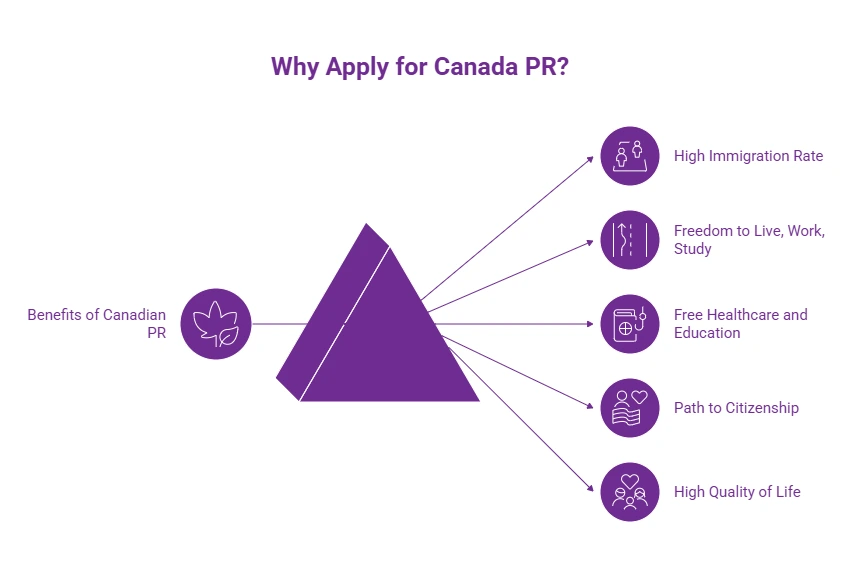Canada Permanent Residency (PR) Visa – Complete Guide
Applying for a Canada PR Visa is a structured process that involves meeting specific eligibility requirements, submitting verified documents, and following the official Canada PR process through recognized immigration pathways. Whether you’re a skilled worker, student, or family applicant, understanding how to apply for Permanent Residency in Canada ensures a smooth and successful application journey.
- Canada aims to welcome 395,000 new permanent residents in 2025 under its official Immigration Levels Plan.
- For the first time, the 2025–2027 plan also includes controlled targets for temporary residents, ensuring balanced population growth.
- The government plans to gradually adjust permanent resident targets to 395,000 in 2025, 380,000 in 2026, and 365,000 in 2027.
- Canada continues to promote diversity, targeting 8.5% of new PR admissions outside Quebec for French-speaking immigrants.
- With strong job markets and family reunification programs, Canada remains one of the world’s top destinations for skilled professionals and families seeking permanent residency.
What is a Canada PR Visa?
A Canada PR (Permanent Resident) Visa allows skilled professionals, families, and students to make Canada their permanent home. With this visa, you can live, work, and study anywhere in Canada permanently, while enjoying many of the same rights and benefits as Canadian citizens.
Permanent Residency (PR) means you are legally authorized to stay in Canada indefinitely without being a citizen. PR holders receive a Permanent Resident Card, which serves as official proof of their status and allows them to re-enter Canada freely. As a permanent resident, you can access free public healthcare, world-class education, social benefits, and a pathway to Canadian citizenship after meeting the required residency period.
Canada offers multiple pathways to obtain permanent residency, including Express Entry for skilled professionals, Provincial Nominee Programs (PNPs) for applicants nominated by provinces, and Family Sponsorship for individuals joining loved ones already living in Canada. Each of these programs is designed to attract global talent, strengthen communities, and support the country’s long-term economic growth.
The Government of Canada continues to expand its immigration targets to welcome more newcomers in the coming years, reaffirming its commitment to skilled immigration and inclusivity.
Why Apply for a Canada Permanent Residency Visa?
Applying for a Canada Permanent Residency (PR) Visa offers stability, freedom, and long-term opportunities for you and your family. As a PR holder, you gain key benefits that make Canada one of the most desirable destinations for skilled professionals and migrants worldwide.
- Freedom to live and work anywhere in Canada: PR holders are free to choose any province or employer without restrictions.
- Access to universal healthcare and quality education: Enjoy provincial health coverage and free public schooling for children under 18.
- Pathway to citizenship after three years: You can apply for Canadian citizenship after 1,095 days of residence within five years.
- Right to sponsor family members: PR holders can bring their spouse, partner, or dependent children to live and settle in Canada.
- Strong economy and job security: Canada remains one of the world’s most stable economies, with ongoing demand for skilled workers across key sectors.
Types of Canada PR Visa Pathways
Canada offers several immigration pathways to obtain Permanent Residency (PR), each tailored to different applicant profiles such as skilled professionals, families, and entrepreneurs. These programs are managed by Immigration, Refugees and Citizenship Canada (IRCC) and provincial governments to attract talent that supports Canada’s growing economy.
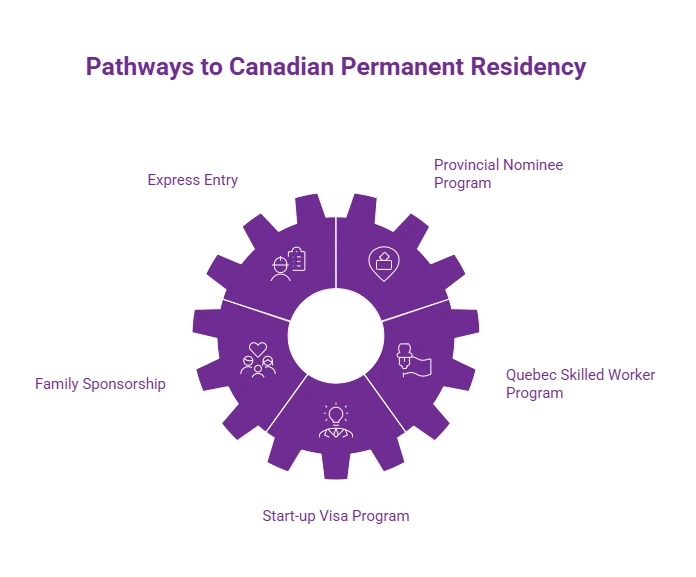
Express Entry System
The Express Entry System is Canada’s primary pathway for skilled professionals seeking permanent residency. It operates through a points-based selection model known as the Comprehensive Ranking System (CRS), where candidates are ranked based on factors like age, education, work experience, and language proficiency.
Programs under Express Entry:
- Federal Skilled Worker Program (FSWP): For professionals with skilled work experience gained outside Canada.
- Federal Skilled Trades Program (FSTP): For qualified tradespersons with experience in eligible occupations.
- Canadian Experience Class (CEC): For individuals with at least one year of skilled work experience in Canada.
How to improve CRS score?
- Enhance your language test results
- Pursue higher education
- Gain more skilled work experience
- Secure a Provincial Nomination (which adds 600 points to your CRS score)
*Want to apply for Express Entry? Let Y-Axis guide you with the process.
Provincial Nominee Programs (PNPs)
The Provincial Nominee Programs (PNPs) allow provinces and territories to nominate candidates who meet their regional labour market needs. Each province has its own streams for skilled workers, graduates, and entrepreneurs.
Popular PNPs include:
- Ontario Immigrant Nominee Program (OINP)
- British Columbia Provincial Nominee Program (BC PNP)
- Alberta Advantage Immigration Program (AAIP)
- Saskatchewan Immigrant Nominee Program (SINP)
Applicants can apply directly to a province (base stream) or through an Express Entry–linked stream, which provides a significant CRS advantage.
*Want to apply for Canada PNP? Get in touch with experts at Y-Axis to assist you with the steps.
Family Sponsorship
The Family Sponsorship Program enables Canadian citizens and permanent residents to bring close family members to Canada. Eligible relationships include spouse or common-law partner, dependent children, and, in some cases, parents and grandparents.
Sponsors must be financially stable and agree to support their sponsored relatives once they arrive in Canada. This program is central to Canada’s goal of reuniting families and maintaining strong community ties.
Business / Investor Immigration
The Business and Investor Immigration pathway is designed for entrepreneurs, investors, and self-employed individuals who can contribute to Canada’s economy through business creation and innovation.
Key options include:
- Start-Up Visa Program: For entrepreneurs with innovative business ideas backed by designated Canadian organizations.
- Self-Employed Persons Program: For individuals with relevant experience in cultural or athletic activities.
- Provincial Entrepreneur Streams: For investors who wish to establish or acquire a business in a Canadian province.
These programs support innovation, attract investment, and create employment opportunities for Canadians.
Eligibility Criteria for Canada PR Visa
To qualify for a Canada PR Visa, applicants must meet specific eligibility requirements set by Immigration, Refugees and Citizenship Canada (IRCC). These criteria are evaluated under points-based systems such as Express Entry and Provincial Nominee Programs (PNPs). The following table outlines the core factors used to assess eligibility for Canada PR.
| Eligibility Factor | Requirements (as per IRCC guidelines) |
| Age | Applicants aged 18 to 35 receive the highest CRS points. Points gradually decrease after age 35 and reach zero at 45. There is no upper age limit, but age affects selection scores. |
| Education | Must have completed secondary or post-secondary education equivalent to a Canadian qualification. Foreign credentials require an Educational Credential Assessment (ECA) from a designated body such as WES, IQAS, ICES, or CES. |
| Work Experience | Minimum of one year of full-time (or equivalent part-time) skilled work experience in an eligible occupation classified under TEER 0, 1, 2, or 3 of the National Occupational Classification (NOC 2021). |
| Language Proficiency | Applicants must prove English or French proficiency through approved tests: IELTS General, CELPIP-General, PTE Core, TEF Canada, or TCF Canada. Minimum language levels depend on the program (usually CLB 7 or higher). Results are valid for two years. |
| Proof of Funds | Required for Federal Skilled Worker (FSW) and Federal Skilled Trades (FST) applicants unless they have a valid job offer or are already working in Canada. The minimum funds requirement is updated annually by IRCC (as of 2025, CAD 15,263 for a single applicant). |
| Job Offer (Optional) | A valid job offer from a Canadian employer can improve your CRS score and support PNP nomination, though it is not mandatory under Express Entry. |
| Adaptability Factors | Additional points may be awarded for factors like Canadian education, previous work experience in Canada, spouse’s qualifications, or a sibling in Canada who is a citizen or PR holder. |
Step-by-Step Canada PR Visa Application Process
Follow these key steps to apply for a Canada PR Visa through the official IRCC process.
Step 1: Check Your Eligibility
Confirm you meet the eligibility criteria for programs like Express Entry or PNP based on age, education, work experience, and language proficiency.
Step 2: Get Your Documents Ready
Prepare essential documents — passport, ECA report, language test results, proof of work experience, proof of funds, police clearance, and medical exam.
Step 3: Create an Express Entry Profile
Submit your profile on the IRCC portal and receive a Comprehensive Ranking System (CRS) score based on your credentials.
Step 4: Receive an Invitation to Apply (ITA)
If your CRS score meets the cutoff in an IRCC draw, you’ll receive an Invitation to Apply for PR. You have 60 days to submit a complete application.
Step 5: Submit Your PR Application
Upload your documents, pay the required fees, and complete biometrics if requested. IRCC’s average processing time for Express Entry PRs is about 6 months.
Step 6: Get Confirmation of PR Status (COPR)
Once approved, IRCC issues your Confirmation of Permanent Residence (COPR) and PR card, allowing you to live, work, and study permanently in Canada.
Canada PR Visa Processing Time & Fees
The time it takes to process a Canada PR Visa depends on the immigration program you apply under and how complete your application is. The Immigration, Refugees and Citizenship Canada (IRCC) aims to process most complete permanent residence applications within set service standards.
Below are the average processing timelines for different PR streams based on the latest IRCC updates.
| Application Type | Average IRCC Processing Time |
| Express Entry (Federal Skilled Worker, Skilled Trades, CEC) | Around 6 months for most complete applications |
| Express Entry–aligned PNP Streams | Approximately 6–8 months |
| Non–Express Entry PNP (Base Streams) | Can take 12 months or more, depending on province and stream |
| Family Sponsorship (Spouse/Partner) | Around 10–12 months on average |
| Business/Investor Immigration | Varies by program (typically 12–24 months) |
Note: Processing times are updated regularly by IRCC and may vary depending on program intake, background checks, and document completeness.
IRCC Permanent Residence Fees
Applying for a Canada PR Visa involves paying government processing fees to Immigration, Refugees and Citizenship Canada (IRCC). These fees cover the cost of reviewing your application, issuing your Confirmation of Permanent Residence (COPR), and granting permanent resident status. The table below outlines the latest IRCC fee structure, applicable to all PR categories.
| Applicant Category | IRCC Fee (CAD) | Details |
| Principal Applicant | 1,210 | Includes CAD 635 processing fee + CAD 575 Right of Permanent Residence Fee (RPRF) |
| Spouse or Common-Law Partner | 1,210 | Same breakdown as above |
| Dependent Child | 175 per child | Applies to each accompanying dependent |
| Biometrics (per person) | 85 | Maximum CAD 170 for a family |
| Permanent Resident Card | 50 | Issued after confirmation of PR status |
| Replacement/Travel Document | 50 | For returning permanent residents |
Documents Required for Canada PR Visa
- Valid Passport
- Language Test Results (IELTS General, CELPIP-General, PTE Core, TEF Canada, or TCF Canada)
- Educational Credential Assessment (ECA) from an IRCC-designated organization
- Proof of Work Experience (reference letters, contracts, or payslips)
- Proof of Funds meeting the latest IRCC minimum requirement (CAD 15,263 for a single applicant as of 2025)
- Police Clearance Certificates from countries lived in for 6+ months since age 18
- Medical Examination by an IRCC-approved panel physician
Canada PR Points Calculator
The Comprehensive Ranking System (CRS) is the points-based method used by Immigration, Refugees and Citizenship Canada (IRCC) to rank candidates in the Express Entry pool for permanent residency. Your CRS score determines your position in the pool and your chances of receiving an Invitation to Apply (ITA) for PR.
How CRS Scoring Works
The CRS awards points based on four main factors:
- Core human capital factors – age, education, language proficiency, and work experience.
- Spouse or common-law partner factors – education, language ability, and work history.
- Skill transferability factors – combinations of education, foreign and Canadian work experience, and language skills.
- Additional points – factors such as a Provincial Nomination (+600 points), Canadian education, French language skills, a valid job offer, or a sibling in Canada.
How to Improve Your CRS Score
- Achieving a higher language score (CLB 9 or above) can add up to 100+ points.
- Obtaining a Provincial Nomination gives an automatic 600-point boost.
- Completing Canadian education adds up to 30 points.
- Demonstrating French proficiency (NCLC 7 or higher) can earn up to 50 extra points.
- Gaining one additional year of skilled work experience can increase your total score.
*Want to check your eligibility to Canada? Try out the FREE Canada Immigration points calculator to get an instant score!
Rights & Benefits of Canada Permanent Residency Visa
As a Canadian Permanent Resident (PR), you gain access to nearly all the same rights and privileges as Canadian citizens, along with long-term stability and opportunities for your family. The key benefits of holding PR status include:
- Right to Live, Work, and Study Anywhere in Canada
PR holders can reside and work in any province or territory without employer or regional restrictions.
- Access to Public Healthcare
Permanent residents qualify for provincial and territorial health insurance, covering essential medical services under Canada’s publicly funded system.
- Free Education for Children
Children of PR holders can attend public schools at no cost, and post-secondary education is offered at subsidized domestic tuition rates.
- Pathway to Canadian Citizenship
After living in Canada for 1,095 days (three years) within five years, PRs can apply for Canadian citizenship.
- Protection Under Canadian Law
PR holders are protected under the Canadian Charter of Rights and Freedoms, ensuring equality, safety, and access to justice.
How to Maintain Canada PR Visa Status
To keep your Permanent Resident (PR) status valid, you must meet specific residency and compliance requirements set by Immigration, Refugees and Citizenship Canada (IRCC). Failing to meet these can result in loss of status or PR card renewal refusal.
-
Residency Obligation – 730 Days Rule
PR holders must live in Canada for at least 730 days (two years) within every five-year period to maintain their status. These days do not need to be continuous and can include time spent abroad with a Canadian citizen spouse or while employed full-time by a Canadian company.
-
Renewing Your PR Card
The PR card is usually valid for five years and serves as proof of your permanent resident status when travelling. You should apply for renewal at least six months before expiry if you plan to travel outside Canada. Your PR status itself does not expire even if the card does.
-
Avoiding PR Revocation
PR status may be revoked if you fail to meet residency requirements, commit serious crimes, or provide false information in your application. If your status is under review, you may appeal to the Immigration Appeal Division (IAD) within the allowed timeframe.
Transition to Canadian Citizenship with Canada PR Visa
After becoming a permanent resident, you can take the next step toward Canadian citizenship once you meet the eligibility criteria. Citizenship offers lifelong security, expanded rights, and greater global mobility.
Eligibility for Canadian Citizenship
To apply for Canadian citizenship, you must:
- Have been physically present in Canada for at least 1,095 days (three years) within the last five years before applying.
- Have filed Canadian income taxes for at least three years within the qualifying period, if required under the Income Tax Act.
- Demonstrate proficiency in English or French (for applicants aged 18–54).
- Pass the Canadian citizenship test covering rights, responsibilities, values, and history.
- Hold permanent resident status with no unfulfilled conditions or pending removal orders.
Benefits of Becoming a Canadian Citizen
- Full Democratic Rights – The right to vote, run for public office, and participate fully in Canadian democracy.
- Canadian Passport – Access to one of the world’s most powerful passports, allowing visa-free or visa-on-arrival travel to 180+ countries.
- Lifetime Status – Citizenship is permanent and does not require renewal or meeting residency obligations.
- Enhanced Global Mobility – Easier international travel and the ability to apply for consular support abroad.
- Complete Legal Protection – Full protection under the Canadian Charter of Rights and Freedoms, ensuring equality and freedom for all citizens.
How Can Y-Axis Help You?
Y-Axis, the leading overseas immigration consultancy in the UK, provides unbiased immigration services for every client based on their interests and requirements.
The impeccable services of Y-Axis include:
- Free eligibility check through Canada Immigration Points Calculator
- Expert guidance/counseling for Canada Immigration
- Coaching services: Expert CELPIP coaching, IELTS proficiency Coaching
- Free career counseling; book your slot today
- Complete guidance for Canada PR visa
- Job search services to find related jobs in Canada
Our Accreditations |
|||
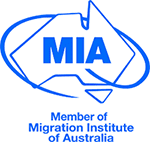 |
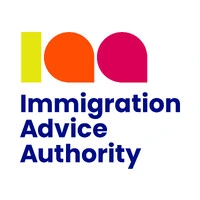 |
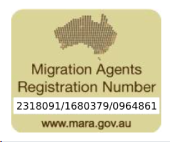 |
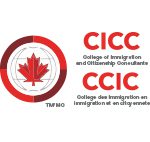 |
Looking for Inspiration
Explore what Global Citizens have to say about Y-Axis in shaping their future
Frequently Asked Questions

